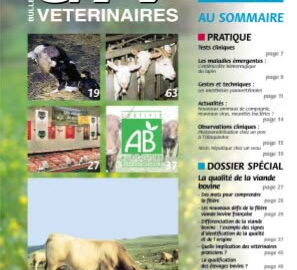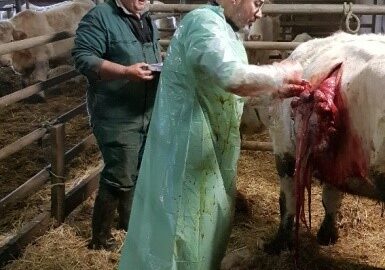Agalactie contagieuse des Petits ruminants, ovins, caprins : situation épidémiologique et mesures de contrôle

Auteurs
Résumé
En France, l’Agalactie contagieuse à Mycoplasma agalactiae a été éliminée de ses zones enzootiques historiques à l’exception d’un secteur initialement très circonscrit du Pays basque intérieur (ovins). La flambée épizootique qui y est observée depuis 2007 fait suite à 15 ans de réduction régulière de la prévalence dans ce département (Pyrénées-Atlantiques). L’évolution du plan de lutte départemental (et national) a d’abord été marquée par l’élaboration puis l’adaptation, à partir de 1989, d’un programme de prophylaxie exclusivement sanitaire reposant sur 4 piliers : qualification annuelle des cheptels, déclaration clinique obligatoire, isolement, incitation à l’abattage total subventionné. Ce dernier n’étant plus acceptable actuellement, et en l’absence d’autres moyens efficaces d’assainissement, le plan de lutte fait l’objet de réévaluations (en cours). Les vaccins inactivés espagnols de première génération sont maintenant utilisés. Un programme spécifique de recherche finalisée a été initié en 2009.
Abstract
In France, contagious agalactia due to Mycobacterium agalactiae has been eliminated from all of its historical enzootic areas except for a well defined area found in the Basque Country (in sheep). The epizootic outbreak observed in this area since 2007-8 follows a 15 year period during which there was a regular and significant decrease in its prevalence in this part of France (Pyrénées-Atlantiques). The evolution in the departmental (and national) plan designed to fight this problem was firstly marked by the creation and then adaptation, starting in 1989, of a preventive health program which relied on four types of action: herd certification, mandatory reporting, quarantine, encouraging subsidized herd slaughter. The latter action is no longer acceptable in the current context, and in the absence of other efficient eradication measures, the plan to fight this problem is currently being re-assessed in order to determine if scientifically established alternatives are acceptable to farmers. First generation inactivated vaccines from Spain are now used. A specific practical research program was launched in 2009 to address these questions.
D'autres articles
Découvrez aussi nos formations
Bovins · Caprins · Ovins


